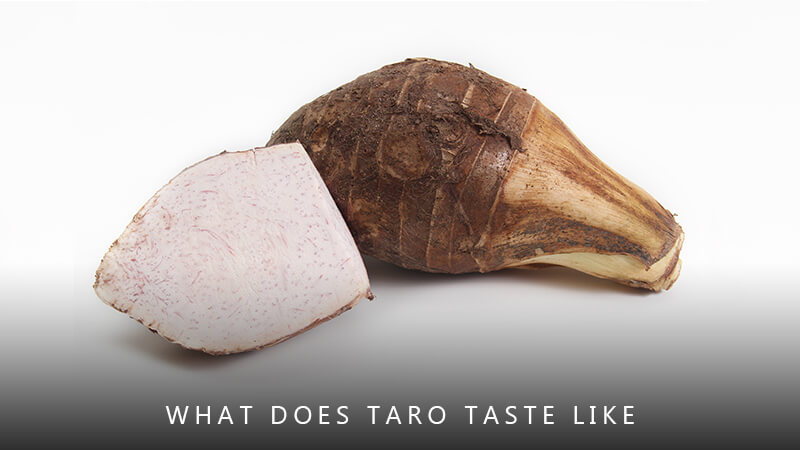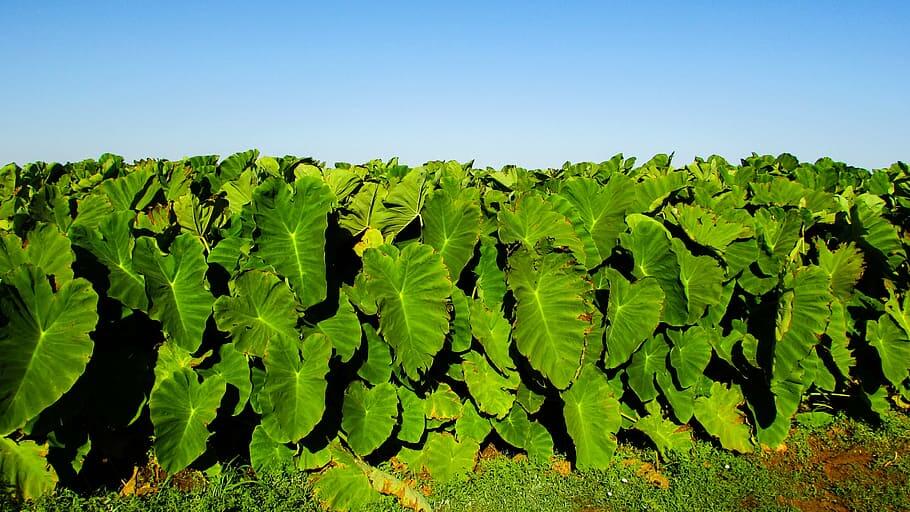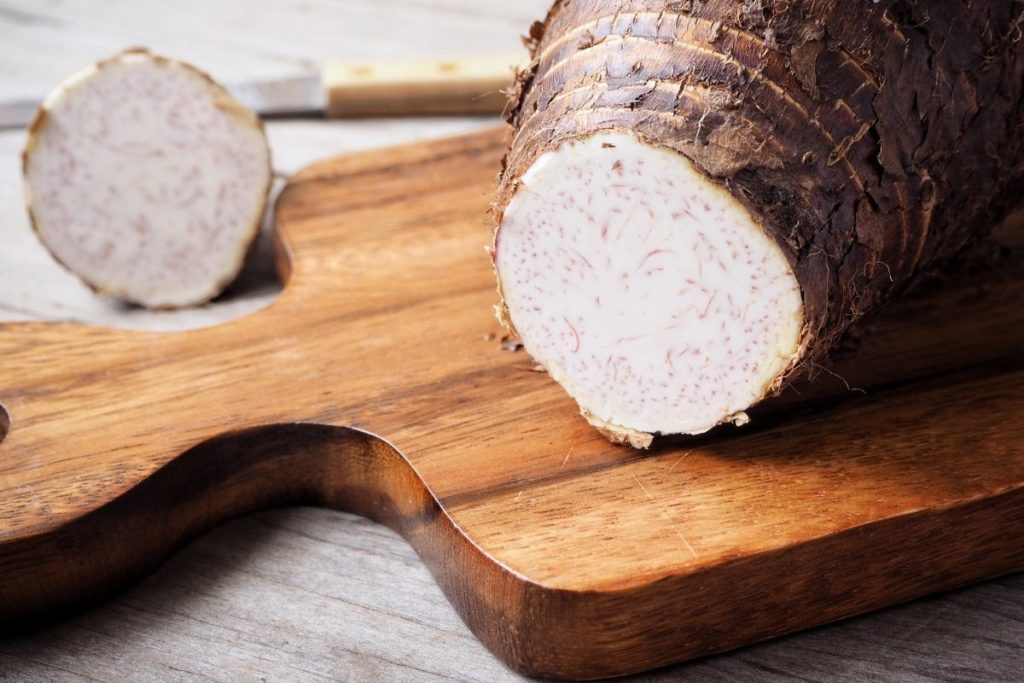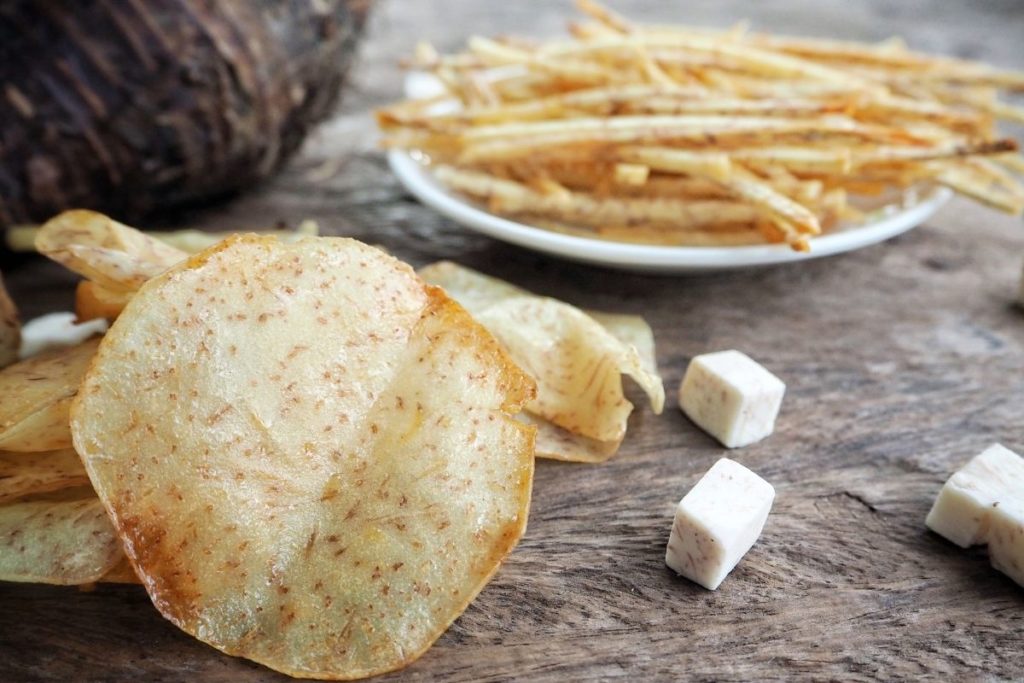What Does Taro Taste Like? (Updated 2025)

The milk tea craze is far from over. One of the most popular flavors is taro. You might be wondering what taro tastes like. We will do our best to describe it, but more importantly why people love it.
At the center of it all is taro, the delightful and downright intriguing color everyone has been posting about on their social media feeds.
Not everyone has had the privilege of tasting or even knowing about taro. As a matter of fact, most individuals doing their weekly grocery runs tend to walk right past this root crop.
If you are one of the people who have not tasted taro yet, you are in for a treat. This article will let you in on the rich flavors and textures this root crop has to offer.
What Does Taro Taste Like?
Now that you know some ways of cooking and consuming this purple-hued root crop, you may be wondering what it tastes like.
In short, taro tastes starchy with a hint of sweetness. It has a wonderful earthy taste complemented with nuttier tones.
Depending on the cooking method, it has a smooth texture on the tongue. It also bears hints of vanilla, making its flavor quite complex compared to its counterparts.
Because of its sweet vanilla taste, this crop is perfect for sweet endings like dessert buns, frozen yogurt, and of course, bubble tea.
What is Taro?
To get started, taro is basically a purplish-colored root crop. It may also exhibit a lighter shade such as lavender or white tinged with purple-hued specks.
Typically native to Southeast Asian countries, the plant is prevalent in areas such as Japan, the Philippines, and China. However, it also grows in other countries and locations such as Hawaii, the Pacific Islands, India, the Caribbean, and many more.
While it may look like a usual root crop, this plant is actually considered toxic to consume raw. Yes, including the root and its leaves. To consume the plant safely, you must cook the purple-hued crop with heat. The same goes for its leaves, normally cooked via steaming.
Taro Texture and Composition
Many compare this root to other root crops, such as white potatoes, sweet potatoes, and the like. This is because it holds the same starchy taste and texture. Even the ways of cooking and preparing this particular ingredient closely resemble that of potatoes – from boiling, mashing, frying, and baking – the options are, indeed, endless.
What makes this different from its counterparts is that it reportedly holds almost three times more fiber. Besides this, the plant contains high levels of potassium and iron, as well as vitamins A and C.
Health Benefits of Taro
Rich in fiber, a cup of cooked taro contains only 187 calories with approximately 6.7 grams of fiber per cup (132g). In addition, it contains other nutrients and vitamins, including magnesium and potassium.
Apart from being a nutrient-filled plant, taro is also known for its ability to maintain, if not lower, one’s blood sugar. Although it is technically a carbohydrate and is starchy in nature, two types of carbs found within are found to aid in blood sugar management, namely fiber, and resistant starch. Fiber allows for better absorption of other carbs, thereby reducing the risk of blood sugar increase.
On the other hand, humans cannot digest resistant starch. Thus, this does not increase sugar levels.
The health benefits of taro do not stop there. This plant aids in weight loss reduces the risk of heart disease, boosts gut health, and provides anti-cancer properties.
Creative Ways to Cook Taro
As a largely versatile plant, you can cook this crop in numerous ways. While it is undoubtedly popular as a boba tea flavor, it is also a favorite among foodies. Take a look at some of the popular ways of cooking and consuming it:
- Hawaiian Poi – Make this staple for Hawaiian people by steaming the crop until soft. Then mash it until it reaches a smooth, creamy consistency akin to mashed potatoes.
- Fries and Chips – Try slicing this crop thinly and frying it to a crisp, just like potatoes and sweet potatoes. For a healthier alternative, bake your fries and chips until crispy.
- Buns – A great alternative to pork buns, cooked taro is made into a paste and stuffed inside pastry dough.
- Baked Taro – Bake it and put a dollop of butter complete with other toppings of your choice: bacon, cheese, and even spring onions or chives, – go wild. This starchy base will absorb all the flavors.
A rule of thumb: clean the root crop thoroughly by scrubbing the dirt from the outer layer of the skin. Then, cut away or peel the fuzzy brown exterior to eliminate unwanted tastes.
Conclusion
Now that you have an idea of what taro tastes like we hope you try it. Not only does it hold a wealth of benefits, but it is also largely accessible wherever you might be. Who knows, taro might just be your favorite thing for the year.
Print5 Easy Taro Recipes
Check out these great Taro Recipes that have been shared on Pinterest.
Ingredients
Instructions
- Click on each link above to view the pin and recipe.
- Obtain all the necessary ingredients to make the recipe.
- Follow the steps to create your dish.
- Enjoy your delicious meal =)
you may also like
well hello there!

Hi, I'm Linda thanks for stopping by! We're so happy you're here. If you're a foodie and love to cook from home - you're in the right place..
LEARN MORE
free newsletter
Join the mailing list and receive our free newsletter!
recent posts
let's be social
search site
Recipe Marker
Recipe Marker provides you with the best information about home cooking tips, recipes, ingredient substitutes and more. Check out our blog to see the latest articles.
Copyright © 2024 Recipemarker.com | All Rights Reserved | Privacy | Disclaimer | Contact












